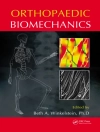In recent years magnetic resonance imaging (MRI) has enriched the technological potential available for the characterization of cardiovascular pathologies, adding substantial advantages to other non-invasive techniques. This technique, which is intrinsically digital and has reduced operator dependency, allows the performance of image analysis in a quantitative and reproducible manner.
The use of non-ionizing energy with the consequent absence of an environmental impact and of operator and patient biohazards makes MRI a winning technique when evaluating the risk – benefit ratio in comparison to other imaging methods.
In virtue of its added diagnostic value and inherent refinements that allow construction of two- and three-dimensional images, MRI is gaining a primary role in the histopathological and physiopathological understanding of a large number of pathologies concerning the heart and vessels.
This text is addressed both to MRI operators seeking specific technical information and to clinicians who wish to have a better understanding of the diagnostic and management advantages that MRI can offer.
Spis treści
Physical principles of imaging with magnetic resonance.- Techniques of fast MR imaging for studying the cardiovascular system.- Post-processing.- Contrast agents in cardiovascular magnetic resonance.- Intracranial vascular district.- Vessels of the neck.- Heart.- Pericardium and mediastinum.- Thoracic aorta.- Renal arteries.- Abdominal aorta.- Peripheral arterial system.












